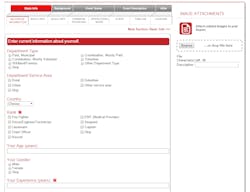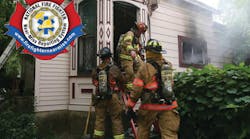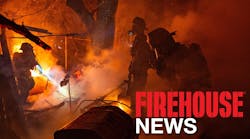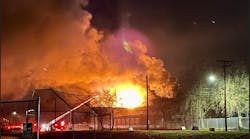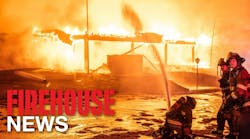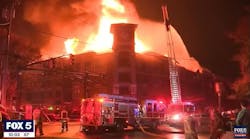The fire service has always been a profession that attempts to learn from its mistakes. The knowledge gained through root-cause analysis of incident scene accidents and near misses is a vital tool in the never-ending quest to improve first responder safety. Unfortunately, unless we as fire and EMS professionals openly contribute to this knowledge base, we lose a golden opportunity to help others avoid similar situations in the future. This is the reason why reviving the Near Miss Reporting Program is so important to fire and EMS responders across the country.
What Is Near Miss Reporting?
The National Near Miss Reporting System was originally founded in 2005 and it is managed under the guidance of the International Association of Fire Chiefs (IAFC). The program’s primary goal has always been to provide a forum for us to learn from close calls and near misses so that we could continue to reduce the number of injuries and deaths in the fire and EMS community. According to Laura Bell, program manager for National Near Miss Reporting Programs, the Near Miss Reporting System has recently undergone several enhancements in an effort to capitalize on the advent of new technologies.
As powerful as the near miss reporting tools can be, they are only as effective as the information that is inputted into the system. In September of 2012, Deputy Chief Billy Goldfeder sadly reported that the program, funded through the Assistance to Firefighters Grant (AFG) initiative, had lost funding. Now that it’s alive again, it’s Bell’s aim to revitalize the program within the fire and EMS community so that we can all learn from our experiences. “We have an amazingly passionate team here. Even when the program wasn’t funded, they all continued to carry the program forward pro bono. Our mission is not just to collect near miss incidents, but also to share them out and see these lessons learned applied in the field. And the team is coming up with new ways to do just that,” she said.
How Does It Work?
What used to be a simple reporting tool that gave the opportunity for fire service subject matter experts (SME) to analyze accidents and near misses is now a comprehensive system that boasts an integrated learning environment you can use in your station. It also provides a gateway to in-person training offerings and tabletop exercises that can help turn close calls and near misses into lessons learned in a non-punitive manner. Submitting a report is easy, completely confidential and secure, and all references to specific manufacturers are removed by the SME prior to publication. To collect information, the Near Miss Reporting website provides step-by-step instructions that walk the user through the process. Once a submittal is analyzed by a SME, the report is published, and it can also be used to develop special training materials and be distributed more widely across the national fire and EMS community.
Results Are Key
A primary reason the program lost funding in 2012 was due an inability to demonstrate positive impact as a result of the data collected. That’s not to say there was no impact. But as we all know, if it can’t be proven with data, it’s not effective in the eyes of those that hold the purse strings. With the backing of the IAFC and other fire service advocacy groups like the National Fallen Firefighters Foundation (NFFF), Bell is determined to change that.
“The National Firefighter Near Miss Reporting System has such a long legacy in the fire service. Everybody was committed to ensuring the program is here to stay," Bell said "So, we made some pretty radical structural changes – to our website, to our reporting form, and we’re also looking to update our training material.”
“Change is hard," Bell added. "But these changes are going to help us better serve firefighter safety and survival by helping us paint a more accurate picture of what is going on and how people are getting hurt.”
Here’s the bottom line as I see it: the key to making the near miss reporting system a success hinges on the willingness of the fire and EMS community to voluntarily submit to the database. For the program to truly have a positive effect, there has to be participation at all levels. For every known close call or near miss, there are likely hundreds or even thousands of similar ones that go unnoticed. Documenting these events so that others can learn from them is key to reducing or eliminating future accidents. That said, it’s critical that fire and EMS personnel take the initiative to learn about the program and to submit their stories for the benefit of our entire community, and It’s even more important that fire and EMS leaders promote the program locally and regionally to raise awareness and support the IAFC’s efforts.
Conclusion
In the coming months, there are plans to improve the electronic reporting process even more, and the IAFC is ramping up support of the program through representation on the Near Miss Reporting Task Force. Discussions have also included the possible production of a short informative video that can be shown during training classes and even inserted into existing fire and EMS training programs. Things are looking up for the program, but without the support of the entire fire and EMS community, how long can it last? For the sake of the health and wellness of our own and so that we can achieve that goal of everyone going home every time, let’s all get involved.
To learn more about the National Near Miss Reporting System check out the website at www.nationalnearmiss.org. To ask how you can get involved in promoting the program, contact Laura Bell at [email protected] or (703) 537-4810.
DAN KERRIGAN, MS, EFO, CFPS, is the assistant fire marshal and deputy emergency management coordinator for the East Whiteland Township Department of Codes and Life Safety in Pennsylvania.
